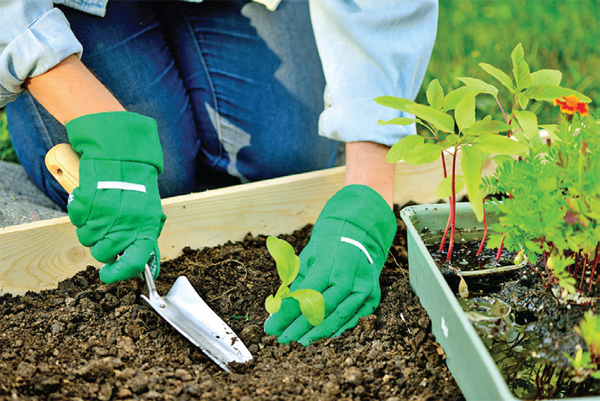How To Grow Organic Tomatoes In Containers Growing organic tomatoes in containers is an excellent way to enjoy fresh, flavorful produce even when space is limited. How do you grow the best organic tomatoes What is way to plant in pots difference between an tomato and a regular potting mix for tomatoes containers indoors Growing Beginners youtube from seeds Best soil cherry plants.
With the right techniques, a balcony, patio, or small backyard can be transformed into a thriving tomato garden. By using organic practices, gardeners can ensure that their tomatoes are free from synthetic chemicals and rich in natural flavors.
The first step in growing organic tomatoes in containers is selecting the right variety. Some tomato varieties are better suited for container gardening than others. Determinate or bush varieties, such as ‘Roma,’ ‘Patio Princess,’ or ‘Tiny Tim,’ are ideal because they remain compact and produce fruit in a relatively short period. Indeterminate varieties, such as ‘Cherry,’ ‘Beefsteak,’ or ‘Brandywine,’ can also be grown in containers but require larger pots and additional support since they continue to grow and produce fruit throughout the season.
Choosing the right container is crucial for the success of organic tomatoes. A container should be at least 12 to 18 inches in diameter and depth, with adequate drainage holes at the bottom. Clay, ceramic, plastic, and fabric pots are all suitable options, but fabric pots are particularly beneficial because they promote better aeration and root development. Self-watering containers can also be advantageous, especially for gardeners who may not be able to water their plants daily.
Using high-quality organic potting soil is essential for healthy tomato plants. Unlike garden soil, potting mixes are designed to retain moisture while allowing excess water to drain. Organic soil enriched with compost, coconut coir, peat moss, and perlite provides the perfect balance of nutrients and aeration. Adding organic fertilizers, such as composted manure, worm castings, or seaweed-based fertilizers, can further enhance soil fertility.
Tomatoes require a nutrient-rich environment to grow and produce abundant fruit. Organic fertilizers should be incorporated into the soil before planting and applied periodically throughout the growing season. Slow-release organic fertilizers, such as fish emulsion or bone meal, provide a steady supply of nutrients. Additionally, a layer of organic mulch, such as straw, wood chips, or dried leaves, helps retain moisture, regulate soil temperature, and suppress weeds. How To Grow Organic Tomatoes In Containers
Planting tomatoes correctly in containers ensures a strong root system and vigorous growth. Tomato seedlings should be planted deeply, with the lower part of the stem buried in the soil. This encourages the development of additional roots, leading to a more robust plant. If planting multiple tomato plants in separate containers, adequate spacing should be maintained to allow for proper air circulation and prevent the spread of diseases.
Providing sufficient sunlight is vital for the growth and fruit production of tomato plants. Tomatoes require at least six to eight hours of direct sunlight daily. Placing containers in a sunny location, such as a south-facing balcony or patio, ensures optimal light exposure. If natural sunlight is insufficient, grow lights can be used to supplement light requirements.
Watering is another key aspect of growing organic tomatoes in containers. Consistent moisture levels are necessary to prevent problems such as blossom end rot and fruit cracking. The soil should be kept evenly moist but not waterlogged. Watering deeply in the morning is ideal, as it allows the roots to absorb moisture before the heat of the day. Self-watering containers and drip irrigation systems can help maintain consistent soil moisture levels.
Supporting tomato plants is necessary, particularly for indeterminate varieties that grow tall and produce heavy fruit. Stakes, cages, or trellises should be installed at the time of planting to avoid damaging the roots later. Regularly tying the stems to the support structure helps prevent breakage and encourages upward growth, making harvesting easier.
Pruning and maintenance play a crucial role in keeping container-grown tomatoes healthy. Removing suckers, the small shoots that develop between the main stem and branches, directs the plant’s energy toward fruit production. Regularly inspecting plants for pests and diseases is essential. Common pests such as aphids, whiteflies, and caterpillars can be managed using organic solutions like neem oil, insecticidal soap, or introducing beneficial insects like ladybugs. Fungal diseases, such as blight and powdery mildew, can be minimized by ensuring proper air circulation and avoiding overhead watering.
Pollination is a critical factor in successful tomato production. While outdoor plants rely on wind and pollinators, container-grown tomatoes may require hand pollination, especially if grown in an enclosed space. Gently shaking the flowers or using a small paintbrush to transfer pollen from one flower to another can improve fruit set.
Harvesting tomatoes at the right time ensures the best flavor and texture. Tomatoes should be picked when they are fully colored and slightly firm to the touch. Leaving them on the vine a few extra days allows for full ripening and enhances their sweetness. Harvesting regularly encourages the plant to produce more fruit throughout the season.
How To Grow Organic Tomatoes In Containers. At the end of the growing season, it is essential to properly dispose of plant debris to prevent disease carryover. Containers should be emptied, cleaned, and stored for the next planting season. Any remaining soil can be refreshed with compost or replaced entirely to ensure nutrient availability for future crops.
Growing organic tomatoes in containers is a rewarding experience that allows gardeners to enjoy homegrown produce regardless of space limitations. By following best practices in soil preparation, watering, fertilization, and pest management, anyone can cultivate healthy, delicious tomatoes without synthetic chemicals. With patience and care, container-grown organic tomatoes can thrive and provide a continuous harvest throughout the season, bringing fresh, flavorful produce straight to the table.


















0 komentar:
Posting Komentar